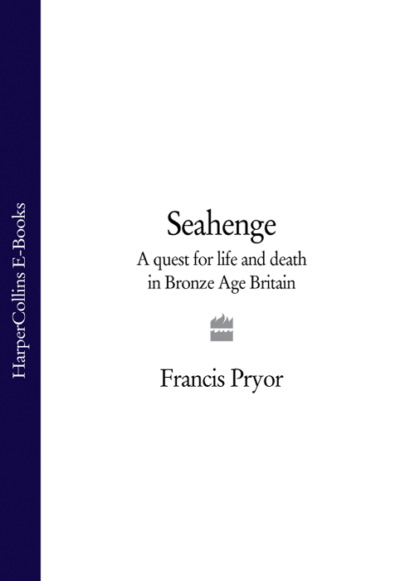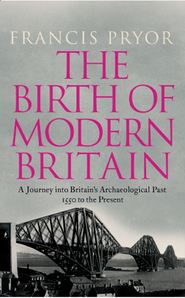По всем вопросам обращайтесь на: info@litportal.ru
(©) 2003-2024.
✖
Seahenge: a quest for life and death in Bronze Age Britain
Автор
Год написания книги
2019
Настройки чтения
Размер шрифта
Высота строк
Поля
The tree is manhandled upright.
Aerial view taken during the final stages of the reconstruction.
The interior during the reconstruction.
Excavators working on the Bronze Age religious site at Flag Fen.
An archaeologist reveals part of a wooden axle which had been jammed between two large posts at Flag Fen.
The oak axle from Flag Fen (1200–1300 BC), the oldest known axle found in Britain.
Objects thrown into the waters around the Flag Fen posts as offerings to the gods and ancestors.
A later Iron Age village at Cat’s Water, Fengate, dating to the final three centuries BC.
MAPS AND DIAGRAMS (#ulink_0a257b3a-3193-558d-b76c-d36cb4f6d7ad)
The Fens (#litres_trial_promo)
The Fengate Bronze Age fields (#litres_trial_promo)
Excavated ground plan of a Bronze Age roundhouse at Fengate (#litres_trial_promo)
Ground plan of the Fengate Neolithic ‘house’, or mortuary structure (#litres_trial_promo)
Ground plan of Fengate Site 11, showing the position of archaeological trenches (#litres_trial_promo)
Ground plan of the Neolithic mortuary structure at Fengate discovered in 1997 by the Cambridge University archaeological team (#litres_trial_promo)
The main features of the Avebury ritual landscape (#litres_trial_promo)
Ground plan of the causewayed ditches at Windmill Hill, Avebury (#litres_trial_promo)
The main features of the Stonehenge ritual landscape (#litres_trial_promo)
Simplified plan of Stonehenge, Phases 1–3 (#litres_trial_promo)
The ritual landscape around Carnac, Brittany (#litres_trial_promo)
Cropmarks revealed by air photography near the village of Maxey, Cambridgeshire (#litres_trial_promo)
Ground plan of the causewayed enclosure at Etton, near Maxey (#litres_trial_promo)
Ground plan of the small henge, with two nested ‘mini-henges’, at Fengate (#litres_trial_promo)
Bronze Age fields revealed by air photography at West Deeping, near Maxey (#litres_trial_promo)
A group of ‘mini-henges’ excavated by Gavin Simpson at Maxey, 1965–66 (#litres_trial_promo)
Decorated shaman’s baton from the Maxey ‘mini-henges’ (#litres_trial_promo)
A complex Later Neolithic henge (Etton Landscape Site 2), showing a succession of ditches, pits and post-holes, from the Etton/Maxey ritual landscape (#litres_trial_promo)
The Maxey Great Henge complex (#litres_trial_promo)
The oval barrow in the entranceway to the Great Henge at Maxey (#litres_trial_promo)
Schematic cross-section through features of the Maxey Great Henge, showing phases of construction and destruction (#litres_trial_promo)
Later Bronze Age wheel-ruts at Welland Bank Quarry, south Lincolnshire (#litres_trial_promo)
Holme-next-the-Sea and the surrounding area (#litres_trial_promo)
Plan of Holme timber circle (Source: Norfolk Archaeological Unit) (#litres_trial_promo)
The forked double posts (numbers 35 and 37) that formed the narrow entrance to Seahenge (#litres_trial_promo)
The enigmatic Street House ‘Wossit’, Yorkshire (#litres_trial_promo)
Ground plan of a barrow at Whittlesey, near Peterborough (courtesy of Cambridge University Archaeological Unit) (#litres_trial_promo)
Fengate and Flag Fen basin, showing the course of the Bronze Age post alignment and timber platform (#litres_trial_promo)
DATES AND PERIODS (#ulink_f925aef1-85d9-5cf2-8b27-961decdd6c17)
PREFACE The Quest (#ulink_f6ce7118-288e-55be-801d-2df95340a92c)
I DECIDED to write a book on prehistoric religion about two years before the discovery in spring 1998 of the site which has since become widely known as ‘Seahenge’. My original aim was to demystify the subject, to blow away the fog of romance which so often appears when it is raised. I wanted to show how ancient shrines such as Avebury and Stonehenge were made and used by people who were like ourselves. Although they constructed places of worship that seem remote, alien and strange to us, they themselves were none of those things.
I was fascinated by the outward form – the appearance – of their religion. Why, for example, did circles play such an important role? Why were offerings placed in the ground? And why were many sites placed within the fields and lanes of the working countryside, while others were hidden away in inaccessible and remote places? We can only attempt to answer these questions if we try to understand the social context of these ancient beliefs; and to do that, we must examine the evidence provided by archaeology.
I also wanted to write about the way in which modern archaeologists can study discarded prehistoric rubbish, long-lost objects and the fragmentary remains of ancient places to recreate the way people thought and behaved. Like fictional detectives, we make deductions from the slightest of clues; but today, increasingly, we go further than that: we try to understand the motives that drove people in the past to construct great monuments like Stonehenge, or small shrines like Seahenge. Almost daily, new scientific techniques are removing the ties that once restricted our imaginations. But these new freedoms carry with them new responsibilities. It’s becoming easier to sound authoritative, simply by quoting evidence uncovered by science. To reveal a precise date through some new wonder-technique is one thing, but it is quite another to understand why something happened in the past. In this book I want to make a start at answering some of those why questions.
The practice of religion has always happened in the here and now, and I wanted my book to be set in a real prehistoric world, in which children were born and educated, families farmed the land, and law and order prevailed – a world which has been rapidly revealed by excavation in the 1970s and subsequent decades. I decided to use the discoveries made on my own particular excavations to colour the picture I wanted to paint.
My research into British prehistory has been a long quest. It began in 1971 when I directed an eight-year excavation at Fengate, near Peterborough. Fengate is one of the best-known sites in British prehistory. It was continuously occupied for four thousand years, from Neolithic to Roman times, and possesses an extraordinarily diverse succession of settlements, field systems, barrows and burials. After Fengate I turned my attention to two major religious centres: the Bronze Age henges and other shrines at Maxey in Cambridgeshire and the partially waterlogged Neolithic ritual enclosure at nearby Etton. Etton was one of the earliest sites of its type yet found in Britain, and is certainly the best preserved. Then, in 1982, I discovered the waterlogged timbers of what is probably the largest Bronze Age religious site in Europe, at Flag Fen, on the outskirts of Peterborough. I have been working there ever since.
These are major excavations and they have produced a wealth of material, not to mention eight volumes of scholarly research. It is, however, hard to extract the essential narrative thread from this sea of published detail. Moreover, the story emerged only slowly as the research progressed – and this was necessarily at a measured, academic pace. My intention in this book is to tell that tale in a way which reflects, I hope, some of the excitement of the quest itself.
I had scarcely begun putting pen to paper when I learned about the timber circle which had been discovered on the beach at Holme-next-the-Sea on the Norfolk coast, just over half an hour’s drive from where I live. It was an extraordinary coincidence, and one I couldn’t possibly ignore. The discovery created enormous public interest, excitement and indeed controversy. It was certainly remarkable, but to those of us who have been working in the area, it was not unexpected. Large parts of the coastline of eastern England are constantly being eroded by the waves, and significant prehistoric finds are regularly exposed there.
Although Seahenge’s near-perfect state of preservation made it unique, as a small wooden shrine it was not out of the ordinary. Indeed, I myself have seen and dug several like it. This was one of the things that made it supremely important, as it meant that it could be placed within a known sequence of development. We knew approximately where it fitted both chronologically and in the lives of Early Bronze Age communities. We also knew what it may have signified to them. Or rather, we thought we did. But when we started to excavate and study the timbers, we were wholly unprepared for what we actually encountered.
SEAHENGE COMES HOME
The Seahenge excavations happened in 1999 and I wrote this book during the following year. While I was writing my wife Maisie Taylor would leave home every morning after breakfast, allowing me to do the washing-up, and would then drive the twenty-two miles to Flag Fen, where she would work away at the Seahenge timbers which were stored in tanks there. By this time, thank Heavens, the protestors and tabloid press had lost interest. After a few months, English heritage decided to have the timbers conserved by freeze-drying and when Maisie had finished with them they were taken to Wales where they were treated at the Mary Rose Trust’s laboratories. This process was completed early in 2007 and the timbers were then sent to King’s Lynn Museum, where money had been found for a permanent display in the main gallery. That display opened in February 2008 and it really is quite exceptionally good. Maisie and other archaeologists have been working with the design team closely and huge efforts have been made to get every possible detail correct. The new display gives a wonderful impression of what the site would have looked like in the Early Bronze Age, not on the beach, but in a damp and rather mysterious back-swamp behind the coastal dunes.
Scientific research has also been pressing ahead and, with admirable promptness, the full academic report appeared in 2003.









